While cables might not appear to cause a great deal of chaos at first glance, their organizational structure, or lack thereof, can impact productivity swiftly. Be it a bundle of cords at your workstation, a set of cables in an entertainment unit, or the wiring in industrious settings, cable ties can single handedly bring order to sites of stark disarray, whether at a residential or corporate level. This guide will look deeply into the labyrinthian world of cable ties, their numerous forms, uses, and best practices for optimal usage. By the end of the article, you will understand the ways in which these simple tools can enhance the safety of your surroundings, streamline your systems, and make your life much easier. Proceed to read on for actionable recommendations, and look forward to content that aids you in easing the ambiguity surrounding effective cable management.
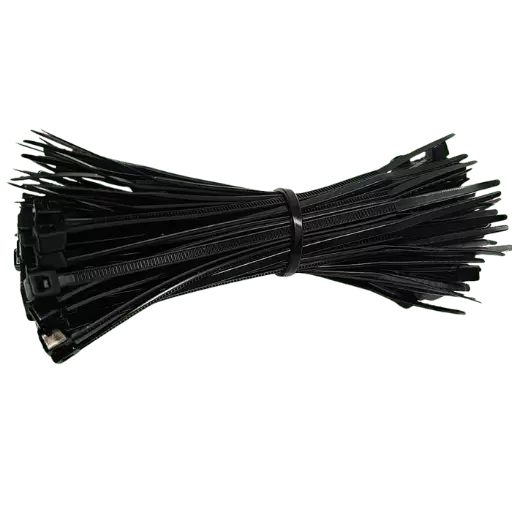
Cable ties, commonly known as zip ties, are fastening devices used in capturing cables or wires together. They are usually made from nylon which gives them strength and flexibility as well as durability. Their primary composition is a strap with serrations on one side that permit one-way passive locking. This strap secures an item that has been bundled. Because they do not need additional accessories for application, they are easily applicable. Thus, they are popular and used in electronics, construction, auto industries, as well as in homes. They are trusted because of their efficiency in cable management and item securing.
Cable zip ties serve the purpose of organizing cable clutter and can be effectively utilized, after following these instructional steps, with little to no effort put into bundling, organizing or securing items.
Cable ties also have attachments made for specific purposes, and these are used in particular industries. Nylon ties are the most common types, as they can be easily used for general purposes like binding and organizing materials. For tasks that require strength and durability, stainless steel cable ties are used. Furthermore, when there is a need for temporary fastening, releasable cable ties are ideal because these can be reused. Lastly, there are UV resistant cable ties that can last longer outside and heat-resistant ones that can endure high temperatures. All the types serve their unique needs which helps enable to get the job done without any extra effort.
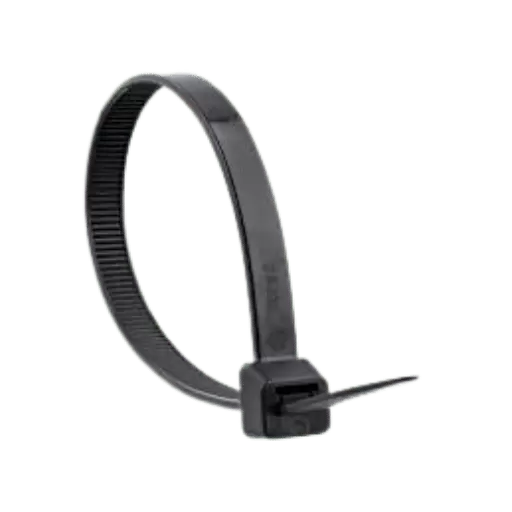
When picking a cable, length and strength become essential. There is no excess slack in the cable length, therefore rendering its utilization effective. Be wary of the length, since too much of it can lead to tripping. The cable’s strength will depend on the maximum load it will need to carry. In order to be on the safe side, choose cables that have a metric rating greater than your needs. This ensures your safety while using the cable. Always check the manufacturer’s guidelines to ensure that the cables features match with the intended use.
With these distinctions in mind, it is possible to choose the cable that best suits your specific needs and operational environment.
When the materials are meant to be subjected to direct sunlight or scorching environmental conditions, both UV resistance and durability is paramount. The term UV resistance indicates to a material’s ability to withstand degradation of its structure, as well as discoloration, whereby radiation renders the material’s components useless due to overheating microwaves.
Certain substances such as high-grade stainless steel plastic that has been chemically infused with ultraviolet radiation have been molded in a fashion such that their appearance and physical properties do not change with their exposure to such substances. The making of the item is a factor that gives UV resistance and control, as does the coating and surface polishing. In terms of furnishing with items that are directly placed outdoors, it drastically reduces the interim supervision that needs to be done to maximize its efficiency.
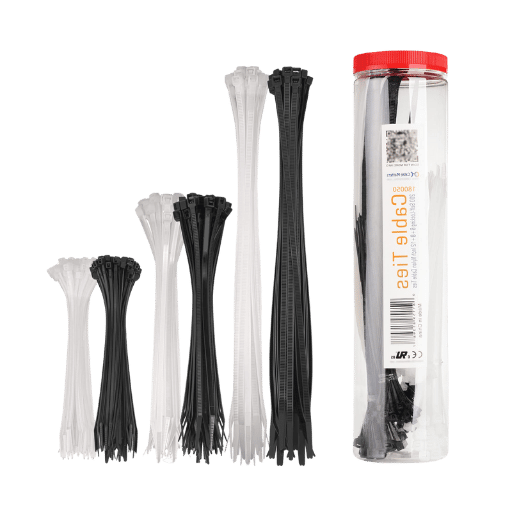
Protectors for trays and cables are important for maintaining and protecting cables in different places. Cables are organized in trays in a methodical way that ease maintenance. By facilitating access to the cables, this method reduces clutter and ensures that the cables are not physically damaged.
Cable protectors are used to secure the cables from deterioration and impact, especially when the cables are located in busy regions. These tools help safeguard the cables and people by reducing the chances of tripping and the risk of electrical injuries. Those devices improve the conditions in the working environment while increasing the longevity of the devices.
A cable management system must have reusable and adjustable features to be adaptable and economical. In relation to dynamic places where cables are constantly integrated or modified, reusable solutions like hook-and-loop straps are perfect since they allow for multiple uses and waste minimization. Adjustable solutions that fit many cable types and sizes allow proper optimally precise organization. All these features save time and money and foster sustainability efficiently while maintaining a safe, clean workspace.
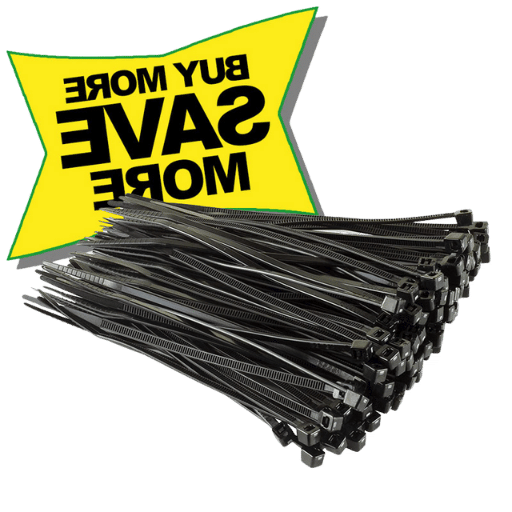
There is a lot of additional safety offered in electronics and electrical projects with the use of efficient cable management. Cables that are properly secured help get rid of the risk of overspeeding, guarantee proper airflow, and significantly cut down on the chances of electrical shorts. With the use of zip ties and cable trays, identifying cabling connections becomes easier which reduces the troubleshooting time. Consistent cable management practices also protect against unnecessary wear and tear on the equipment caused by stressed or tangled cabling, which greatly enhances the overall safety and longevity of the equipment installations.
By ensuring proper bundling of cables, high-quality zip ties boost productivity and performance regardless of the working environment. These zip ties also do well in high temperatures, exposure to UV, or hot and moist conditions which makes them great for both indoor and outdoor applications such as mounting, aiding in precisely organized layouts that require less time to manage or replace cables. Furthermore, premium zip ties are often equipped with additional features such as easy locking devices and tensile strength labeling, which improve installation speed with more reliability in professional electrical and electronic systems.
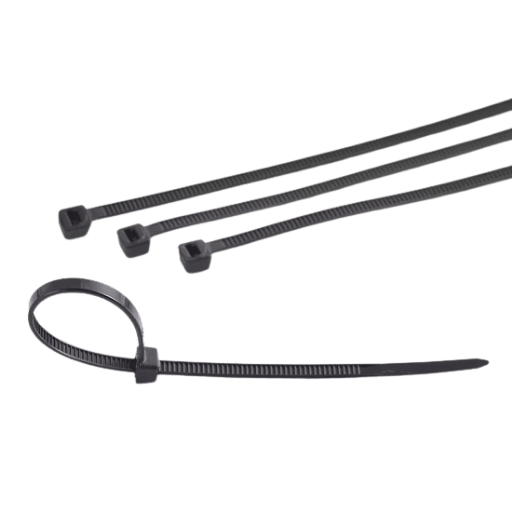
We have designed the website with the clients’ needs in mind, which makes it simple to navigate, easy to inquire and instant to respond. Our team is fully prepared to assist you in product choice and offer great customer service. We respond to all questions, provide additional information to interested people, and explain how to use the products. We aim to exceed expectations and deliver high-quality products, excellent service, and effective support before, during, and after the purchase. This is how we maintain strong and productive relationships with our clients. We expertly help customers with every step of the purchasing process, allowing smooth transitions without interruptions.
Here at CableTiesAndMore.com, our fast shipping and delivery service guarantees that your cable zip ties and other products are shipped efficiently to minimize downtime. With the help of our strategically placed warehouses and trustworthy carriers, accuracy and speed are a priority within each shipment. Our innovative supply chains allow us to deliver cable ties, heat shrink tubing, and other essentials along with any deadlines you may have while maintaining the highest standards. Count on us to supply the products you need when you need them.
Cable management solutions are essential to any industry. At CableTiesAndMore.com, we offer a wide range of options such as our Heavy Duty cable ties which are made for specific applications where strength and durability is of utmost importance. They can withstand extreme conditions and heavy loads. It is also perfect for settings that require easy maintenance like food processing areas or medical facilities. Each product in our range combines function and quality, ensuring reliable performance tailored to your specific requirements. Explore our catalog to find the perfect solution for your project.
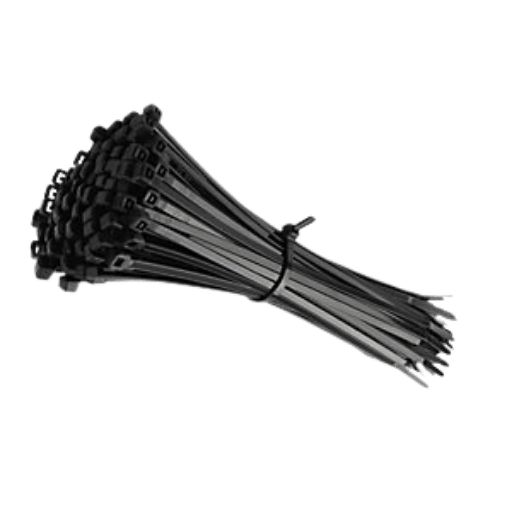
A: Cable ties serve different purposes across different industries and homes. Other than being known as zip ties or wire ties, cable ties are used to organize, secure, and bundle wires, cords, and cables. They are easy to use and effective for power cords organization, computer cables bundling, and outdoor wiring management.
A: Nylon zip ties, Velcro straps, plastic zip ties, and stainless steel zip ties are all forms of cable ties. Each type has its benefits whereby nylon and plastic are suitable for everyday use, stainless steel is best suited for outdoor usage or for high temperature application, while Velcro is used when frequent tightening is needed.
A: Yes, there are differences. Indoor cable ties are suitable for home and office use and are typically made from standard nylon or plastic. In contrast, outdoor cable ties are often manufactured from steel or UV resistant materials because they are able to withstand harsh weather conditions as well as UV light.
A: When securing a bundle, the correct size cable zip tie will be determined by the bundle’s circumference and the required pull strength. Start by measuring the girth of your cord or wire bundle and add a little more for the locking mechanism. It is also important to take into account the weight and stress exerted on the cables. Many manufacturers, Kable Kontrol and CableTiesAndMore, for instance, have sizing guides to assist you in selecting the appropriate size for your cable tie.
A: Indeed! Beside the management of wires, cable ties have many other uses. Some include organizing tools, bundling plants in gardening, holding tarps on top of a load in the truck, fixing things temporarily in automotive work, and even for different craft projects. This is what makes them popular with DIY contractors and home improvement fans.
A: Yes, there are reusable alternatives to traditional zip ties. One of the Velcro varieties is plastic straps like the belt which is ideal for situations where constant changes are required. Some manufacturers produce releasable zip ties which can be unlocked and reused. These alternatives are preferable for temporary arrangements or those who need to adjust their cable management frequently.
A: Look for reputable manufacturers and suppliers to ensure you are using high quality cable ties. Look for UL listed certifications because the ties have had specific safety measures put in place. Try reading customer review and anticipating the type of use, for example, if they are ties intended for external use then they should be rated for that. CableTiesAndMore, for instance, stake their reputation on providing quality cable zip ties and are willing to help their customers select the right ties for the job.
A: Certain companies are now venturing into making biodegradable cable ties using plant material. These cables are much more eco-friendly compared to their plastic counterparts. Velcro straps are a reusable alternative that also cut waste and biodegradable plant-based options offer a better way to save the environment. Moreover, if you are trying to throw away standard nylon or plastic zip ties, many facilities will process them along with other plastics, so it’s best to check with your local recycling center.